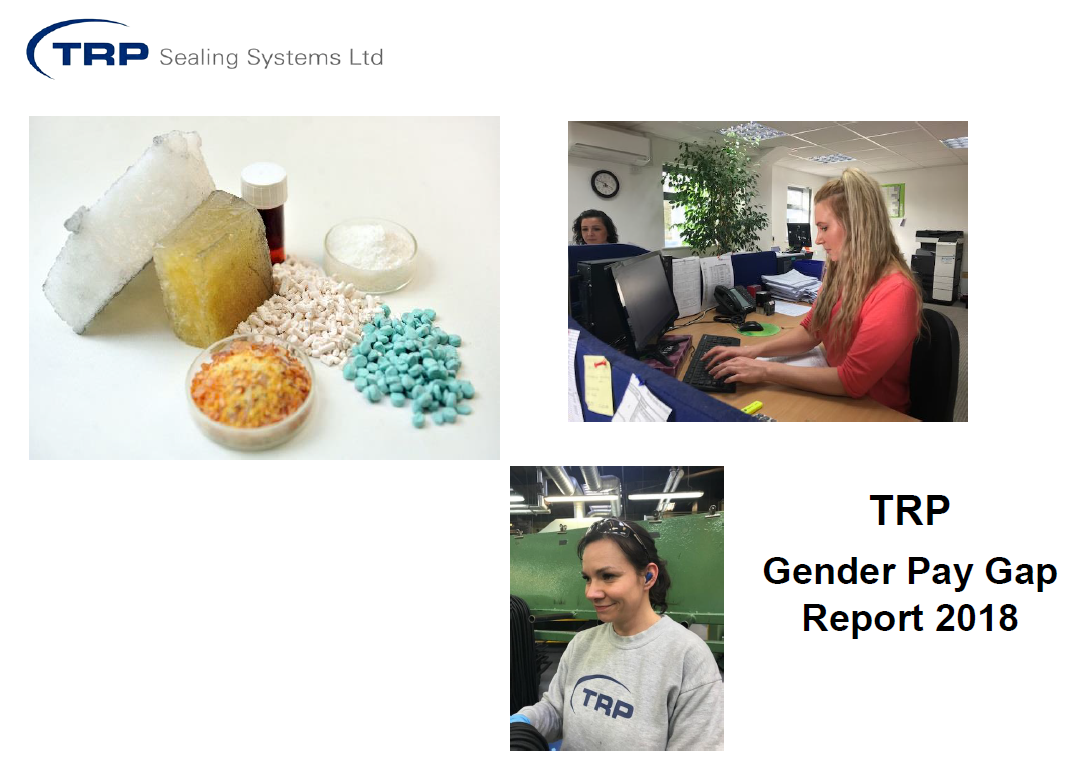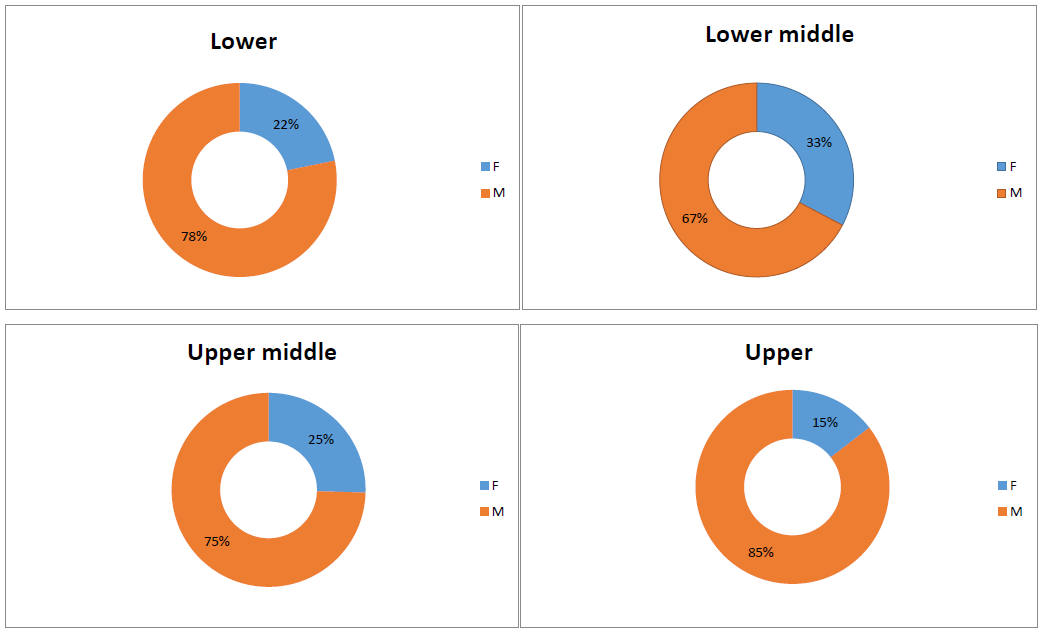 Gender Pay Gap Report 2018
Gender Pay Gap Report 2018
In accordance with the Gender Pay Act Regulations this is the second year TRP is presenting its gender gap figures for workers in scope at 5th April 2018.
TRP’s Human Resources Dept. and its Managing Director, Simon Children, attended a series of webinars presented by The Government Equalities Office and Business In The Community entitled “Closing the Gender Pay Gap – retention and progression of female talent”, to better understand gender aligned compensation, talent development practices & policies, and generally to improve the management of gender and diversity.
How big is the gender pay gap in the UK for 2018?
Among full-time employees, women tend to be paid less per hour than men, while the opposite is true for part-time employees.
Median hourly pay for full-time employees was 8.6% less for women than for men at April 2018, while median hourly pay for part-time employees was 4.4% higher for women than for men (figures exclude overtime pay). The median is the point at which half of people earn more and half earn less.
However, a much higher share of women than men are employed part-time and part-time workers tend to earn less per hour than those working full-time. Consequently, when we look at the gender pay gap for all employees (full-time and part-time), median pay for all employees was 17.9% less for women than for men at April 2018.
Overall Gender split in TRP
At 5th April 2018 our workforce was 76% male and 24% female.
| 76% male | 24% Female |
Mean and median gender pay gap
Mean pay for men is 15.2% higher than for women, down from 16.3% in 2017.
Median pay for men is 11% higher than for women.
We still employ over twice more men than women and a greater proportion of our senior leadership team are men, which impacts on the above figures. Traditionally, some occupations are dominated by one gender. For example, administrative roles have historically been held more by women, while men occupy more than three-quarters of our production roles. Where these are generally higher or lower paid, there can be a significant impact on the gender pay gap, and continues to be a challenge for TRP and industry.
Mean and median gender bonus payments
The mean bonus pay for men is 27.5% higher than for women.
The median bonus pay for men is 4% more than for women, down from 9.8% in 2017.
A disproportionate amount of women work in office roles and these personnel are not eligible for the productivity bonus scheme. Employees in those roles eligible for the productivity bonus have an equal opportunity to receive one.
The percentage of employees who receive bonus pay was 95% male and 92% female.
95% male |
| |
| 92% Female |
|
|
Distribution of employees across the quartiles
Nationally, one of the main reasons for the gender pay gap is the fact that more men are likely to hold senior positions within organisations. This national trend is reflected at TRP, and this is represented in the graphs presented below.

Bridging the gap – what is TRP doing about it?
TRP remain committed to inclusion and diversity, and encourage gender parity and female advancement.
TRP continue to work on its workplace culture, retention, progression and inclusive leadership to narrow the pay gap. In particular:
Transparency in all gender pay gap aspects by collecting, analysing and monitoring data.
Where business requirements allow, implement flexible working into all job roles, at all levels of the company.
We allow, where possible, unpaid leave in addition to the statutory annual leave to achieve a better balance between work and personal commitments.
Family friendly policies for carers (where possible accommodating the shift changes for partners).
We enable Shared Parental Leave to be taken at any point and simultaneously within the first year so men and women are equally able to remain visible across the organisation during time off.
Regularly assess employees engagement and implement changes in promotion trends of underrepresented groups.
Create a working environment that doesn’t enable or permit sexual harassment to occur.
Refresh job criteria to ensure women and men will equally apply for jobs.
Promote an inclusive leadership which is the key to increasing employees engagement and productivity, and is effective in breaking down the barriers to progression many women face.
To foster equal opportunities, ensure ‘physical’ working practices are, as far as they can, be eliminated or reduced.
Ensure grievance opportunities for women directly to the company HR Dept (rather than to a line manager).
Attract a workforce that is reflective of society and in which people feel accepted and valued based on three principles: FAIRNESS, INCLUSION AND RESPECT.
I confirm that to the best of my knowledge and belief, the information and data reported is true as of the snapshot date 5th April 2018.
Simon Children
Managing Director
TRP Sealing Systems Limited.

 TRP Seals -TRP Gaskets - Experts in Rubber
TRP Seals -TRP Gaskets - Experts in Rubber

